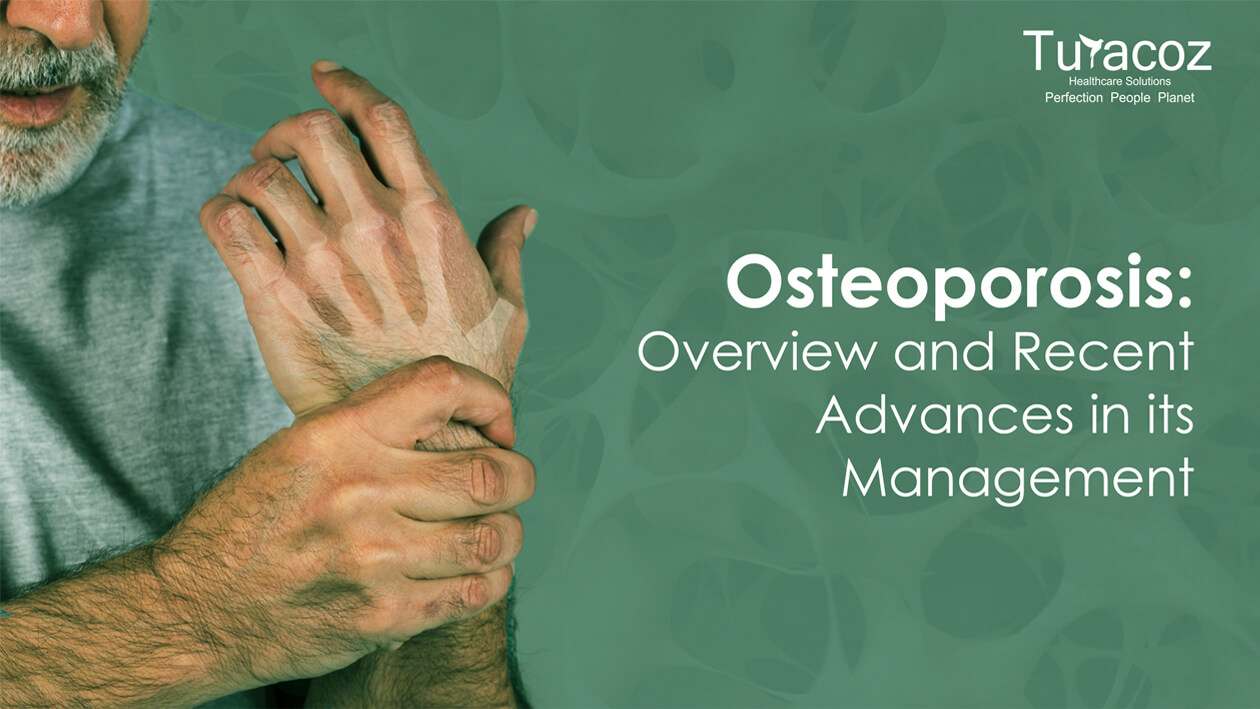
Osteoporosis is a silent age-related skeletal disease characterized by loss of bone mineral density and microarchitectural deterioration leading to increased fragility and susceptibility to fractures. The most common sites of fracture are femoral neck, lumbar spine and distal forearm which more than often are debilitating and disabling if not intervened. Osteoporosis has affected more than 200 million people worldwide, with almost 8.9 million fractures reported annually across the globe. Close to 30% of postmenopausal women in America and Europe suffer from osteoporosis while India estimates not less than 50 million of its people in the plexus of this debilitating bone disease. The overall impact of osteoporosis is presented in Table 1.

Assessed by a T score of less than -2.5 (World Health Organization definition in Figure 1) and a Z score significantly higher or lower than the average, osteoporosis may operationally be classified as the following 2 types:
Postmenopausal (type I): Linked to the fall in oestrogen levels, this type affects women between 50 and 70 years of age.
Senile (type II): Affects both men and women over the age of 70, but predominantly women.

Risk Factors for Osteoporosis
Using Fracture Risk Assessment Tool Model (FRAX) algorithms, several risk factors have been recognized that predispose men and women to osteoporosis. Smoking, alcohol consumption, high salt intake, immobilization, sedentary life, excessive weight loss reducing the BMI below 18.5 kg/m2, inadequate exposure to sun and socioeconomic factors have been shown to be significantly associated with its risk and incidence. The most common risk factors are shown in Figure 2, of which, modifiable factors like declining levels of sex hormones, anorexia nervosa, low calcium and vitamin D intake are attributed to faulty lifestyle. Public awareness campaigns have been spreading their annex to educate and motivate necessary changes towards preventing osteoporosis.

RECENT ADVANCES IN OSTEOPOROSIS
Diagnosis
With one in three women and one in every five men over the age of 50 years worldwide are being estimated to face the risk of osteoporotic fractures in their lifetime [1], inclusion of diagnostic tests for bone health in their health check-up plans to help them get therapeutic or preventive measures in time becomes imperative.
Treatment
Currently, to accost the imbalance between bone resorption and build-up in osteoporosis, anti-resorptive and osteoanabolic agents crown the list and fall under the first and second line of therapy [9].
Table 2 gives a brief glance over the current mediation used to treat osteoporosis with their trade names.

Apart from these current ones, there have been a surge in development of more efficacious drugs for osteoporosis management (Table 3).

A minimally invasive targeted treatment in which local bone loss due to osteoporosis is restored by implanting a unique material that is resorbed and replaced by bone, is being offered as Ossure LOEP (local osteo-enhancement procedure) kit by AgNovos, USA. Also, during the last decade, vertebroplasty and kyphoplasty has also evolved as an effective surgical procedure in certain cases with subacute pain, oedema and focal joint tenderness.
THE KNOWLEDGE-PRACTICE GAP
Despite path-breaking diagnostic and therapeutic advances, there exists a lacuna in their application and compliance. Osteoporosis stays unfortunately and vastly, underdiagnosed and undertreated, and identifying these gaps in patient care becomes indispensable. A few of them are listed below:
PREVENTION
Rebuild. Refuel. Renew.
Although lifestyle choices, genetics and systemic diseases, and even certain medications pose as substantial risk factors, the good news is that osteoporosis is preventable.
“A thousand tiny steps can conquer the tallest tower”
Turacoz Healthcare Solutions aims to provide information on the latest trends, updates and advances in the field of clinical research, trials and regulatory affairs. Turacoz Healthcare provides an end-to-end support for scientific communications, clinical trial documents and disclosures, regulatory documents writing and submissions, and medico-marketing writing along with e-modules & e-books on healthcare and research.